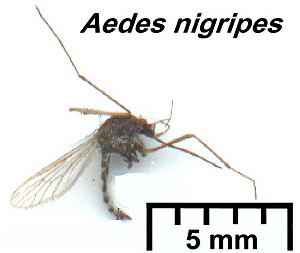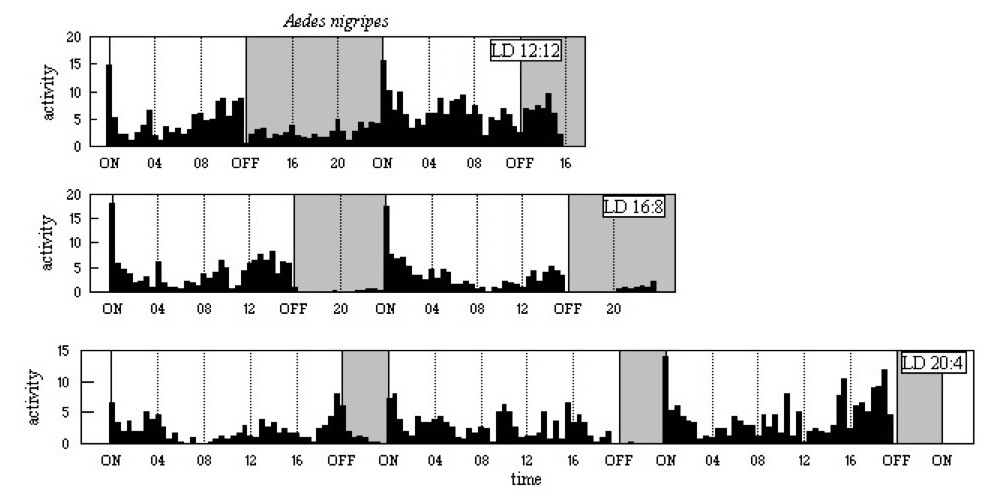Biological Clocks in Mosquitoes
|
 The most abundant species of the Arctic (Vockeroth, 1954), found
throughout treeless Arctic areas of the Holarctic Region, and
southwards to the edge of the boreal forest. The type location was
Greenland (Stone et al., 1959). In North America the southern
limit appears to be between 51°N (St. Anthony, Newfoundland) and 55°N
(Gt. Whale River, Quebec) (Vockeroth 1954) and the northern limit on
Ellesmere Island (81°49'N) (Corbet 1966). Natvig (1948) notes the
southern limits in the Palaearctic as 66°N in Fennoscandia and the
former USSR, but Skierska (1962) reported it from Danzig Province,
Poland (54°22'N).
The most abundant species of the Arctic (Vockeroth, 1954), found
throughout treeless Arctic areas of the Holarctic Region, and
southwards to the edge of the boreal forest. The type location was
Greenland (Stone et al., 1959). In North America the southern
limit appears to be between 51°N (St. Anthony, Newfoundland) and 55°N
(Gt. Whale River, Quebec) (Vockeroth 1954) and the northern limit on
Ellesmere Island (81°49'N) (Corbet 1966). Natvig (1948) notes the
southern limits in the Palaearctic as 66°N in Fennoscandia and the
former USSR, but Skierska (1962) reported it from Danzig Province,
Poland (54°22'N).
Experimental material
The adults were reared, under LD 16:8 and 20°C, from larvae received
from the University of Manitoba, Canada. The eggs had come from Baker
Lake, North West Territories (64°20'N). The rearing regime was with the
lights on from 0400-2000h GMT, and recordings were made with light-off
at 2000h GMT.
Experimental regimes
LD 16:8 to LD 12:12, three females and one male, studied from 3
days post-emergence (24 January 1969). Recorded in LD 16:8 from days
four to six then light-on delayed 4h to give LD 12:12 for one more day.
LD 20:4, three females and two males, studied from 3 days
post-emergence (24 January 1969). Recorded in LD 20:4 for days three to
six.
Results and discussion
The activity patterns are shown in Figure A17 below. It clearly is a
day-active species. In LD 12:12 and LD 16:8 there are E' and M
peaks, with some activity before light-on in LD 12:12. In LD 20:4
there appears to be a trimodal pattern, with M, mid-day
and E' peaks.
Corbet (1966) described its occurrence on Ellesmere Island (81°N), where he found oviposition only on surfaces insolated between 0600h and 2100h local time, especially the areas insolated between 1100h and 1300h. Later, he recorded diel periodicities and found the main peak of all activity (emergence, flight, host-seeking and oviposition) was around solar noon, although environmental factors, such as temperature, wind speed and humidity, could alter the pattern considerably. The laboratory patterns would fit both the continuous daylight, Arctic conditions, and the long days of lower latitudes.
Figure A17

|
©1998, 2010 - Brian Taylor CBiol FSB FRES 11, Grazingfield, Wilford, Nottingham, NG11 7FN, U.K. Comments to dr.b.taylor@ntlworld.com |
href="\crhtml\aenigri.htm"